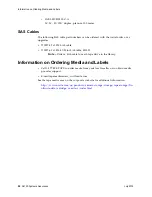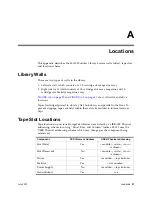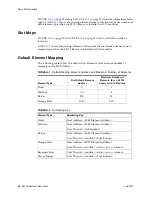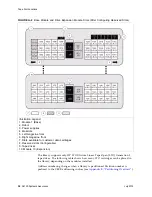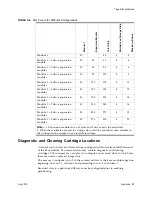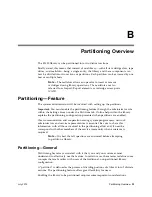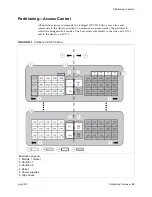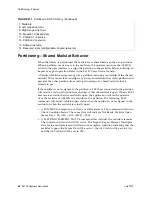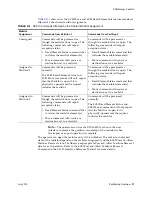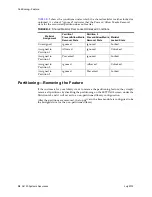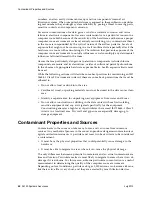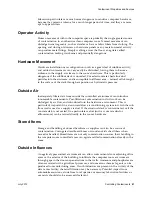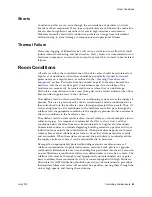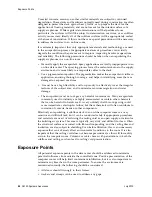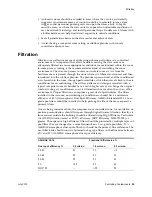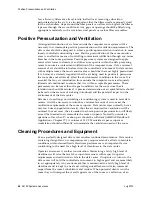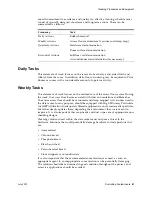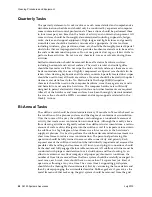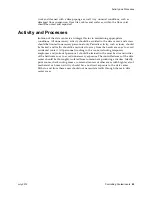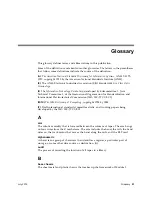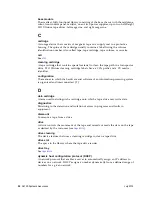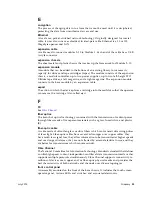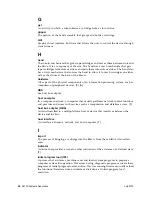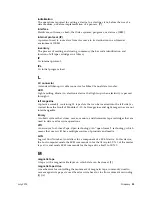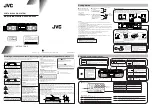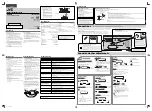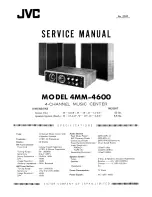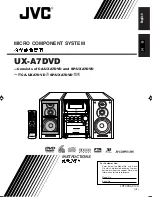
Contaminant Properties and Sources
40
SL150 Systems Assurance
July 2012
numbers, and can easily circumvent many sensitive components’ internal air
filtration systems. When computer hardware is exposed to these submicron particles
in great numbers they endanger system reliability by posing a threat to moving parts,
sensitive contacts and component corrosion.
Excessive concentrations of certain gasses can also accelerate corrosion and cause
failure in electronic components. Gaseous contaminants are a particular concern in a
computer room both because of the sensitivity of the hardware, and because a proper
computer room environment is almost entirely recirculating. Any contaminant threat
in the room is compounded by the cyclical nature of the airflow patterns. Levels of
exposure that might not be concerning in a well ventilated site repeatedly attack the
hardware in a room with recirculating air. The isolation that prevents exposure of the
computer room environment to outside influences can also multiply any detrimental
influences left unaddressed in the room.
Gasses that are particularly dangerous to electronic components include chlorine
compounds, ammonia and its derivatives, oxides of sulfur and petrol hydrocarbons.
In the absence of appropriate hardware exposure limits, health exposure limits must
be used.
While the following sections will describe some best practices for maintaining an ISO
14644-1 Class 8 Environment in detail, there are some basic precautions that must be
adhered to:
• Do not allow food or drink into the area.
• Cardboard, wood, or packing materials must not be stored in the data center clean
area.
• Identify a separate area for unpacking new equipment from crates and boxes.
• Do not allow construction or drilling in the data center without first isolating
sensitive equipment and any air targeted specifically for the equipment.
Construction generates a high level of particulates that exceed ISO 14644-1 Class 8
criteria in a localized area. Dry wall and gypsum are especially damaging to
storage equipment.
Contaminant Properties and Sources
Contaminants in the room can take many forms, and can come from numerous
sources. Any mechanical process in the room can produce dangerous contaminants or
agitate settled contaminants. A particle must meet two basic criteria to be considered
a contaminant:
• It must have the physical properties that could potentially cause damage to the
hardware.
• It must be able to migrate to areas where it can cause the physical damage.
The only differences between a potential contaminant and an actual contaminant are
time and location. Particulate matter is most likely to migrate to areas where it can do
damage if it is airborne. For this reason, airborne particulate concentration is a useful
measurement in determining the quality of the computer room environment.
Depending on local conditions, particles as big as 1,000 microns can become airborne,
but their active life is very short, and they are arrested by most filtration devices.
Содержание StorageTek SL150
Страница 6: ...6 SL150 Systems Assurance July2012 ...
Страница 8: ...8 SL150 Systems Assurance July2012 ...
Страница 10: ...Access to Oracle Support 10 SL150 Systems Assurance July2012 ...
Страница 18: ...Tape Drives and Media 18 SL150 Systems Assurance July2012 ...
Страница 22: ...Tape Drive Cleaning 22 SL150 Systems Assurance July2012 ...
Страница 32: ...Tape Slot Locations 32 SL150 Systems Assurance July2012 ...
Страница 50: ...Activity and Processes 50 SL150 Systems Assurance July2012 ...
Страница 60: ...60 SL150 Systems Assurance July2012 ...

